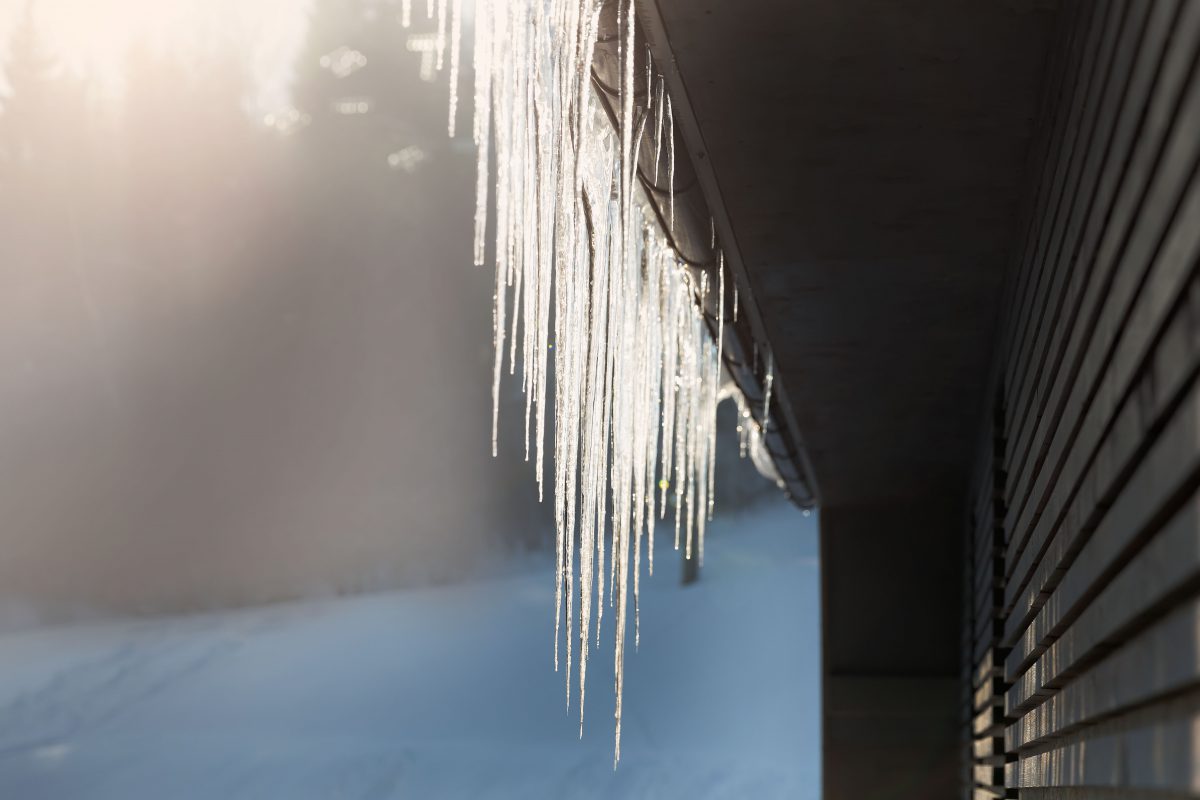Cold weather is here. With the drop in temperatures, comes inclement weather including snow and ice. Ice in particular, can be dangerous and cause damage to your home, vehicle, roof, and cause injuries from slips and falls. When it comes to your roof, one of the most common causes of winter damage is from ice dams, a block or ridge of ice that forms on the edge of a roof from melting snow and precipitation that prevents water from draining off a roof.
The icicles hanging from a roof from ice dams look festive this time of the year, but can wreak havoc on your roof. Ice dams can tear off gutters, remove and loosen shingles, and cause floods and leaks. If an ice dam is blocking your gutters and preventing melted snow from draining away, the high concentration of water can back up and flood your home. If you notice warped floors, paint peeling, excessive humidity, stains, mold, mildew, and sagging ceilings, you might have a leak caused by an ice dam. These are more common in cold climates, but can happen anywhere during bouts of cold weather and winter storms.
Ice dams form when heat escapes from an attic and melts snow and ice on a roof. The water then flows down to the gutters which are colder as the escaped heat does not reach them. The water freezes and blocks gutters with ice. Ice dams increase as more snow melts and freezes on top of the existing ice. Water can also back up on roofs and seep into cracks in your roof and into your attic, and into your ceiling.
Here are a few tips to prevent and manage ice dams.
- Remove snow from your roof, is possible. During massive snowfalls this is easier said than done. Remove snow with a roof rake or a push broom.
- If you live in a cold climate, try installing heated cables on your roof to melt ice when it reaches your gutters.
- When ice dams have already formed, spraying them with a water hose can melt them in a hurry. This should only be a temporary measure as if the temperature stays colder than 32 degrees, the water will freeze again.
- Do not break the ice with anything sharp or with salt to melt the ice.This will damage your roof and could lead to injury. Salt will also damage your paint and could corrode your shingles if used repeatedly.
- Ice dams are less likely to form on metal or standing seem roofs.
- Use a box fan in your attic to keep the air colder to prevent heat from escaping.
- Don’t knock down icicles as they could damage your roof and gutters.
- Clean your gutters prior to winter weather to ensure they function correctly and do not get clogged with water and debris that can freeze into ice dams.
- If ice dams are a persistent problem, consider increasing the insulation in your hom

